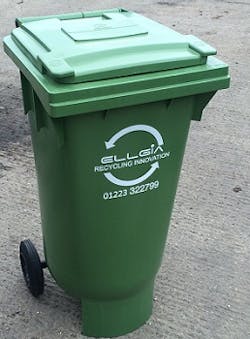3 innovative ways data centers are getting greener
By ROSS MOMTAHAN, Geist -- Data centers have received some criticism for their potential impact on the environment. A report from Greenpeace released in 2012 was critical towards major brands as well as smaller data center operators for their detrimental environmental impact.
For data center operators, it’s a tricky issue. You still have to prioritize your business and your customers, but you can’t ignore the environment either. However it’s not all bad – we’ve seen some great developments and innovation by a huge number of companies recently. Here are some of my favorite data center “recycling” innovations:
Recycling heat
This is an interesting concept. Fortum, the Finnish energy giant, is one company that is leading the way in terms of recycling heat. It’s something the company's Chief Business Developer, Mattias Ganslandt, thinks that both energy companies and data centers have neglected for too long.
Fortum is currently running a pilot scheme in Stockholm, allowing data centers to contribute to the city’s district heating system.
The use of waste heat for district cooling is not a new concept. In the United Kingdom, London’s old Pimlico District Heating was using waste heat from the iconic (and now defunct) Battersea Power Station in the 1950s. It seems like one of those “Why didn’t I think of that?” situations with data centers, which could easily be defined as very large and efficient heaters that also happen to do computing.
Of course, coming up with the idea and actually putting it into practice are two different matters.
Swedish ISP Bahnhof started working closely with Fortum on this project last year and is currently running its Thule and Pionen (famous for looking like a super villain’s lair) data centers on the system. Bahnhof claims that Pionen earned £30,000 from its district heating provision in the first three months of operation and that the equipment used will pay for itself within three years.
Bahnhof seems to be pleased with the outcome, to the extent that the company is now planning to build a data center optimized for heat recovery. The “Green Hub Stockholm” will also run on 100 per cent renewable energy and use sea water for cooling.
Of course being close to a district heating network is a necessity for this form of recycling, but it will be interesting to see if initiatives like this offer benefits to rival those boasted by the likes of The Node Pole – a region in Sweden claiming to be the perfect location for data centers due to its cold weather and abundance of renewable energy.
Recycling water
With all the talk of climate change dominating the headlines, one aspect of the environment that we often forget is water.
While there is about 1.35×10^21 kg of water on this planet, only about 0.014 per cent of this is accessible drinking water. That’s still 2×10^17 kg – which seems like plenty. However, more than one in six people on this planet do not have access to clean drinking water. Even here in the USA, we are seeing regular headlines about water shortages. Lake Mead, the country’s largest reservoir, recently recorded a record low water level. California is currently experiencing one of the most severe droughts on record.
There might be plenty of fresh water, but this water is constantly moving through the water cycle and in many places we are starting to consume it quicker than it can be replenished. So, it is something we should care about, and thankfully there are companies out there taking steps already.
Many data centers simply use the municipal water supply. Using clean drinking water to cool data centers doesn’t seem like the most logical solution. This is why Google has installed water treatment plants and rain collection systems in its data centers. Its facility in Hamina, Finland uses sea water to cool without the need for chillers.
This way, the “dirty water” is being cleaned just enough to make it suitable for data center cooling systems. Aside from the environmental benefits, Google also views this method as important to its data center operation. By remaining independent from the public water supply, Google also gains more control over its own water supply.
Google isn’t the only company doing this – it’s great to see Facebook, eBay and many others also take similar approaches to saving water.
Recycling air (or not)
This is taking the somewhat opposite approach. Recycling air is already the status quo in data centers – air cools computers, air gets chilled, air goes back to cool computers.
However, recycling may not be the best approach in this case.
Free air cooling is becoming more and more prevalent in data centers. This makes particular sense in regions with a cold climate.
Among others, Facebook’s data centers in the Arctic Circle use this approach, but here it seems a bit of a no-brainer.
Even when in warmer climates, outside air can be used. Intel ran a study using 100 percent outside air at temperatures as hot as 90 degrees Fahrenheit -- with estimated power savings of 67 per cent (approximately $2.87 million) in a 10MW data center.
Conclusion
It’s refreshing to see companies challenging the commonly accepted principle of “100 per cent uptime at all costs." Yes – ensuring reliability is still the most important thing for data center operators, but we are now seeing companies push the boundaries of what is possible in terms of efficiency and minimizing impact to the environment, while also maintaining reliability.
Have you seen any exciting developments in data center sustainability? Is your company doing something that you want to share? If so, let us know in the comments.
Ross Momtahan writes on behalf of DCIM supplier Geist (www.geistglobal.com).
